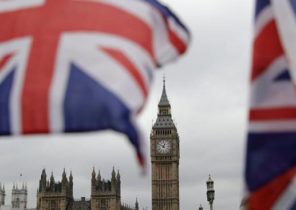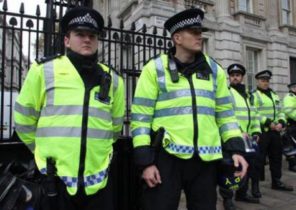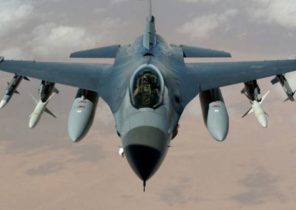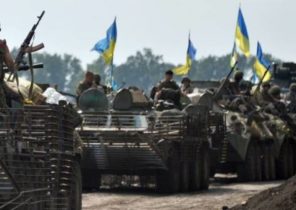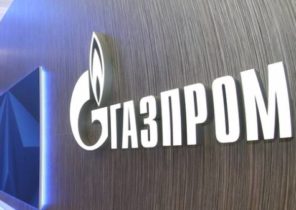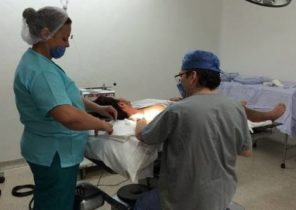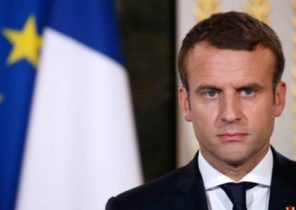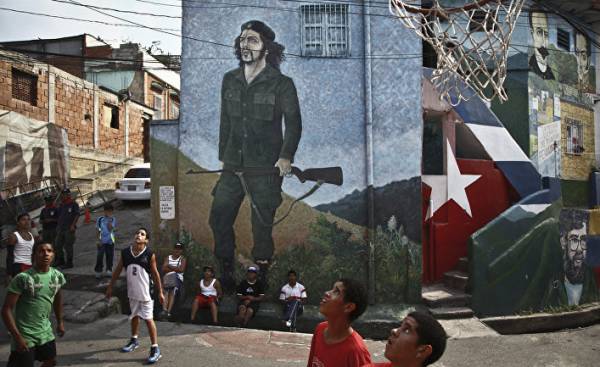
June 14, 1928 in the Argentine city of Rosario (Rosario) was born Ernesto Guevara de La Serna (Ernesto Guevara de la Serna), better known as Che. Sputnik took an exclusive interview about the man and the myth that arose after the Cuban revolution of 1959, his younger brother Juan Martin.
Juan Martin Guevara (Juan Martín Guevara) is perceived primarily as the brother of the legendary Che, one of the leaders of the Cuban revolution. He’s 15 years younger Ernesto is the author of the book “My brother Che” (‘Mi hermano, el Che’), which talks about him as a person.
In an interview with the Telescopio (Sputnik) Juan Martin recalls some episodes of his childhood and youth, associated with Che killed in Bolivia 39 years ago when he tried to continue the revolutionary movement in this South American country. On 14 June he would have been 89 years old.
Now the youngest of the brothers Guevara de La Serna with excitement recalls how his mother hugged prominent revolutionary 6 January 1959, when he arrived in Havana. Their meeting was captured on film, which Juan Martin looked for the first time only recently.
Sputnik: Who was Ernesto Guevara who was Che?
Juan Martin (Juan Martín Guevara): I won’t be able to tell you a lot about who Che was, but can tell who was Ernesto. Ernesto — my brother, Che — minded. We in the family are quite normally perceived his way of thinking and actions. It is very difficult to understand how suddenly your brother, not much different from the others, suddenly turned into Che. It’s not easy to explain, because he is still my brother. He was older than me by 15 years, I was a small child. But he did not belong to the category of people who put themselves above you, he was my older brother, who looms over you. On the contrary, have always tried to come up with something fun for them and for me.
— When did you last see him?
— In January 1959, I was 15 years old, and he was Th. We then spent three months in Havana. We couldn’t be together because it was the first days of the Revolution, and he was very busy. But my mother, father, sister and her husband met and talked with him. Then we met again in Montevideo in 1961, when I was 18 years old. There he was also very busy, but our conversation was much more lively and they have been discussed very different issues than when we were in Cuba. this was my last meeting with him and my mother several times in Havana. A liaison with him was she, as I lived with my mother.
In the book “My brother Che,” you write about what your family has gone to Havana on 6 January 1959, in the midst of celebrating the victory of the Revolution, and also that the plane you were sent for Fidel, as all celebrated the victory with their families, in addition to Th.
In reality, the story of this trip is. Before that in Cuba there was a very bloody and brutal dictatorship of Batista (Batista), and many people fled from the island. Immediately after the victory of the Revolution Fidel sent a plane to get from South America members of the 26th of July Movement, who were forced to leave Cuba. Camilo Cienfuegos (Cienfuegos Camilo), who was entrusted with the organization of the flight, decided to take us. He told us that in the beginning did not tell Ernesto that we’re flying this plane, on the basis that he would be against, since the aircraft was intended for immigrants, not for his family. He said when we were on the approach.
I’ve seen pictures of the scenes of our arrival, as mother embraced him and recently saw film footage discovered in Cuba, which is shown as we descend from the plane, and as a mother embraces Ernesto. I remember that hug was very long, the film shows how long it lasted. Now looking through these pictures, I experience the same feelings, seeing as they embrace after so many years and so many reports of his death and other news about it, which published the newspaper.
— Often emphasize the ethical side of the figure of Che Guevara…
— I keep talking about it, this tells my book, the purpose of which is to talk about him as a person. It turned into a kind of myth, often devoid of content, and the best way to draw his image — is to talk about him as a person who had family, father, mother, brothers and sisters. Fortitude he inherited more from his mother than from his father, but both parents had strong character.
My father, whose energy beat over the edge, all the time starting new projects, something new. As a rule, he has not completed, some projects were stuck, but he started other and was always active. And my mother was a very disciplined person with inviolable ethical principles. From both parents, who have always looked to the future and was not burdened by any conservatism, Ernesto took the best.
— How the family learned of the death of Che?
— I then took delivery of dairy products and went to work early in the morning. The exact date can not remember, think it was October 10th, the Newspapers published his photos and reports of deaths in battle. Of course, we knew what killed him. When I saw the photo, I doubted its authenticity, because many times we have received reports of the death of Ernesto, which was false. That day evening we gathered as a family, and some believed that the photo was mounted. But when I looked at him again, then realized that it was real.
Two days later, my brother Roberto went to Valle Grande (Valle Grande), on the plane, paid for an Argentine magazine. Together with him flew two journalists to interview the military. Roberto had intended to take the body and make sure it was really Ernesto. When he arrived, he was told that there is no body. He was driven from one place to another. Then he had to go to La Paz, where he met with the Bolivian military Alfredo Ovando (Ovando, Alfredo). He was asked to return to Valle Grande, saying that there is no body because it was burned. In the end, he returned to Buenos Aires, without having made sure of death. But we received a call from Havana where that photo really was a picture of Che.
— In thirty years the location of his grave was discovered, and then his remains were transferred to Cuba and solemnly reburied in the mausoleum in Santa Clara.
— Yes, we were there in 1997. Then I went to Santa Clara again because the cult of death, not really attracts me. You seem to find yourself in another world: eternal flame, the silence of the urn with the ashes of all the comrades of Che, murdered at the same time in the Bolivian village of La Higuera (La Higuera). It’s all the same what to enter into the Holy place. We then present in the mausoleum during the ceremony, which was made by Fidel.
— Have you been to La Igera only 47 years after the death of Che. How to explain such a decision?
I was there twice. The first time I couldn’t get to the gorges of the Quebrada del Yuro (Quebrada del Yuro), where Che was wounded and taken prisoner. I was with people who were in a hurry and had not intended to descend into the gorge. The next year I was down in the gorge along a steep mountain path and reached the place where I grabbed Th. There is a special pointer. There I met the son of Inti Before (‘Inti’ Peredo), one of the companions of Th.
For some time we conversed in this place, which unites us. Here fought and Ernesto, and the father of my companion. Then I with great difficulty got to the top, due to the steepness of the climb, and because of the emotional stress. But to go back do not want and not only because I am not a supporter of the cult of death, but also because there are all imbued with the spirit of trade, and not only sell Souvenirs and false facts.
— What do you feel about using the image of your brother commercially?
When my brother Roberto went to Bolivia to identify the body, which was not given, it was obvious that this was done with the aim to get rid of Th. Not only physically, but to not have even a place where they could honor his memory, had no memories of him, of his ideas. They failed because the identity of Th means much more than what they tried to hide. He is alive in the minds of the people, people, society, youth.
The fact that his image is used for commercial purposes, pursues a clear goal not to allow it to become a benchmark for young people. This feature of the capitalist system: commercial use not only the image of Che. Be sure to find someone who will be able to profit from anything. And here are two objectives: to debase his personality and not to allow it to become a moral beacon for young people, so that people were not interested in his ideological heritage was not read his articles. That is, to transform it in the pure business project.
The question is, why this way [extraordinary, made by Alberto Korda (Alberto Korda) in 1960] continues to capture the attention of people. This is one of the most recognizable faces in the world, perhaps as famous as the face of Christ. The youth and contributes to the fact that the image of Che lives on in the hearts of the people.
— During the military dictatorship you’ve been in prison for almost nine years. Ernesto is so strongly influenced your political views?
— Large number of young people of my generation were under the influence of the Cuban revolution, and we started to fight each in his own way, seeking to radically change the situation. The plight of a brother also had on me, because in that moment, when he is from Ernesto Guevara became Che, I am also from Juan Martin Guevara began to turn to brother Che, as he has become increasingly prominent, and now the legendary figure. If to speak about prison, there were mostly my political beliefs. There are in fact conditions are the same for all, no matter whose you brother. You are no better and no worse.
— No matter what the fight, devoted himself to Che now?
I always think he’d be where the people are fighting for their freedom, independence, and eventually for socialism. Can’t exactly say where it would go. Because, among other things, the modern world has changed, although the problems were all the same: inequality, poverty, discrimination, violence, concentration of wealth in the hands of a small group of people. The ideals for which he fought, and still continue to live, albeit with other actors and in a slightly different form.
Ask me if Che were alive, what would today’s Latin America? A free, sovereign, independent and a socialist? But he is not with us, so the youth must accept these ideals and to take concrete actions to change the world, which remains as unequal, or even more unequal, than in those years.
